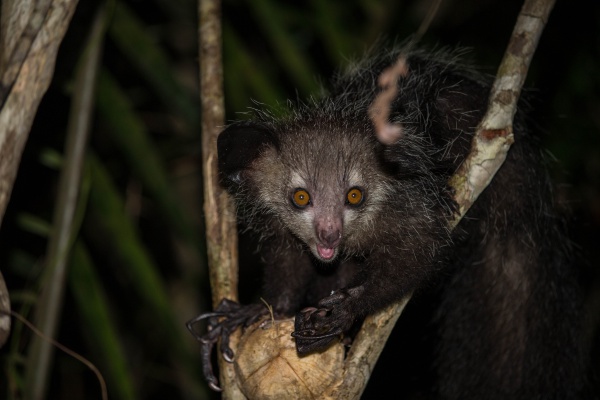Facts About Aye-aye
The aye-aye is a unique lemur native to Madagascar, known as the largest nocturnal primate in the world. It is famous for its distinctive method of foraging: tapping on trees with its extremely slender middle finger to locate grubs, which it then extracts. This bizarre behavior distinguishes it from other animals.
First described by French naturalist Pierre Sonnerat in 1782, the aye-aye has intrigued scientists due to its unusual characteristics, such as continually growing front teeth and specialized fingers. Genetic research indicates that the aye-aye is the most primitive of all lemurs, likely descended from a single ancestor that reached Madagascar. Its exceptional anatomy includes a long tail, unique fingers, and prominent ears that facilitate echolocation.
Aye-ayes lead solitary lives, spending most of their time in trees. Their diet is varied, consisting of seeds, fruits, insects, and fungi. These lemurs exhibit complex social behaviors; males maintain large territories that overlap with those of multiple females. Communication occurs through scent marking and a range of vocalizations.
Typically inhabiting the rainforests and deciduous forests of eastern Madagascar, aye-ayes have also been found in cultivated areas due to deforestation. Efforts to conserve this endangered species are underway, including captive breeding programs. Despite local superstitions associating aye-ayes with bad luck, conservationists are dedicated to protecting them from habitat loss and other human-induced threats.
